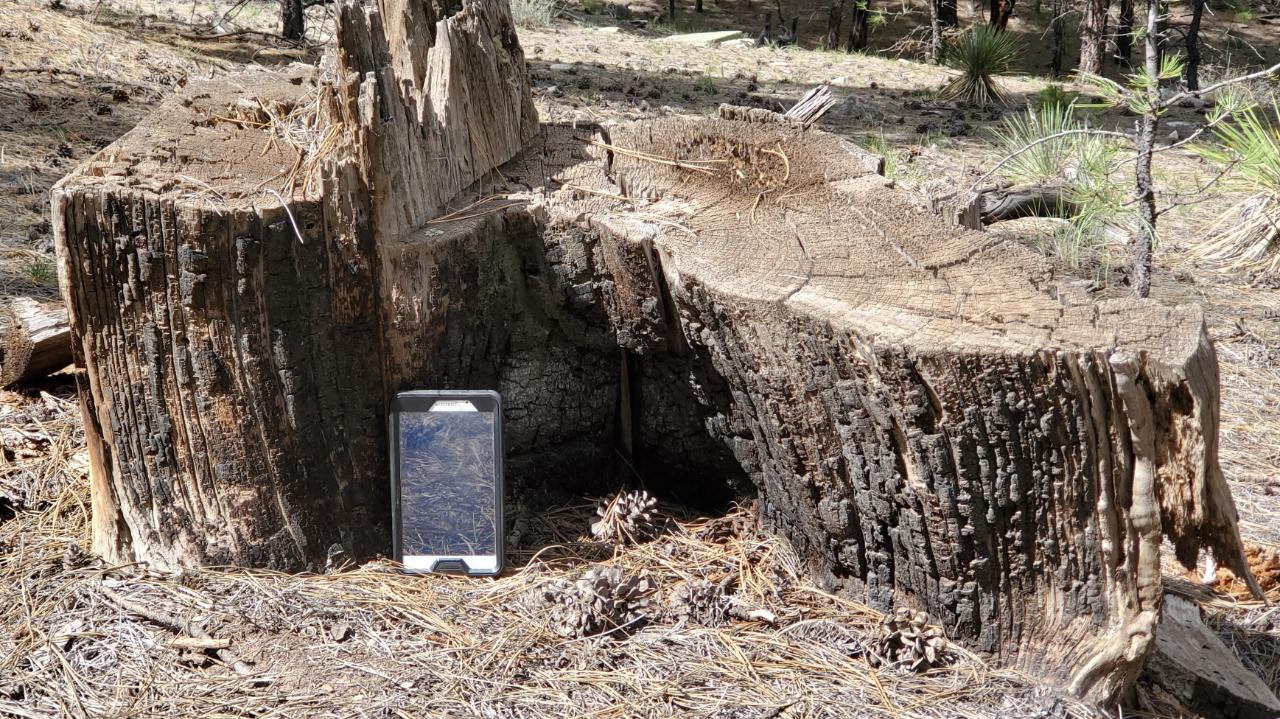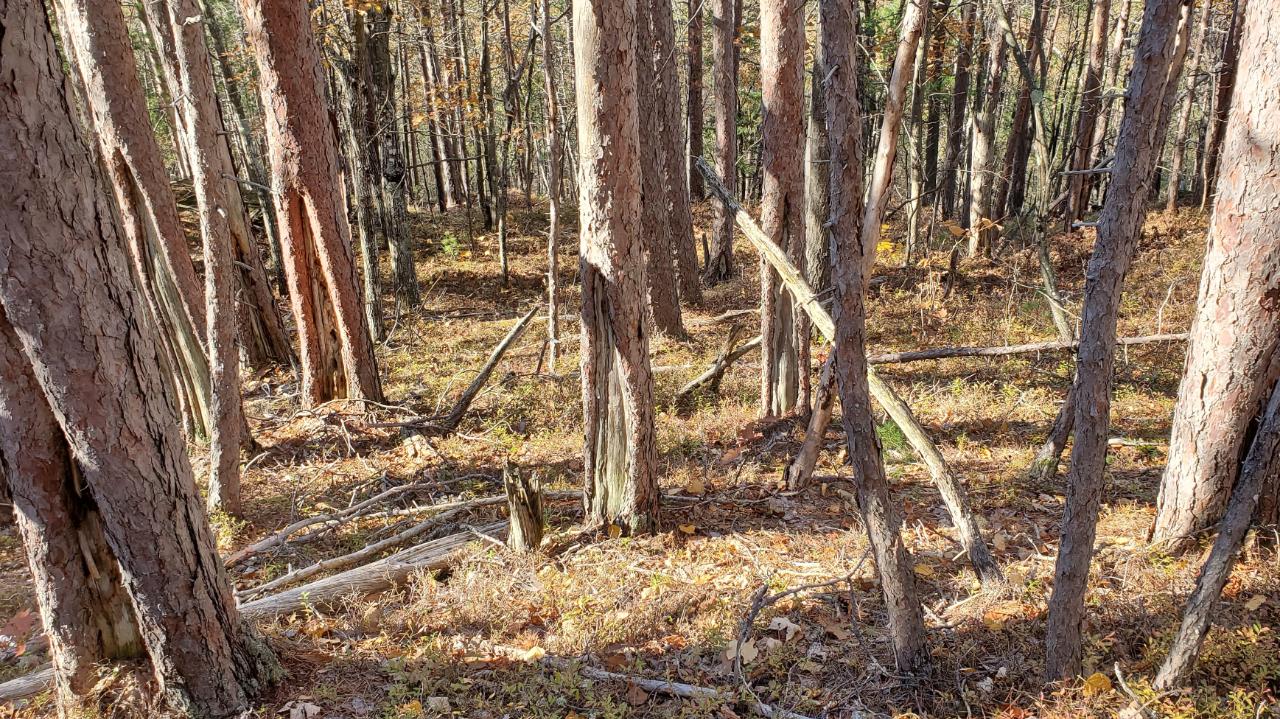Chris Guiterman
Research Scientist II
- PhD, University of Arizona
- MSc, University of Maine
- BA, Bates College
Research Interests
My research investigates the interactions among fire, climate, vegetation, and people. My specialty is in dendrochronology, the science of using tree rings to reconstruct past environmental processes. As a dendroecologist, I tend to focus on the drivers of changing forest dynamics, including climate change, human land-use, and altered disturbance processes. I use tree rings to reconstruct historical fire activity at local to landscape scales to better understand why wildland fire has become such a problem in many areas, and what forest and fire managers can do to ease the strain that climate change poses to our forests.
At CIRES, I work with the NOAA-NCEI Paleoclimate team to operate the World Data Service for Paleoclimatology. We house more than 20 types of paleoclimate and paleoenvironmental data used by researchers worldwide. We are currently working to develop new ways for researchers and the public to explore and access the repositories via Open Access software and tools.
Current Research
- The North American tree-ring fire-scar network
- I co-lead a team of researchers from throughout North America to investigate broad-scale relationships among fire history sites and the climatic influences on historical fire activity.
- Fire history of the White Mountains of New Hampshire
- I've had the honor of helping to build a regional team composed of fire crews from the USFS White Mountain National Forest, state agencies, researchers from Plymouth State University, University of Maine, and Colby College, Indigenous partners and knowledge keepers, and The Nature Conservancy to investigate the origins, history, and fire regimes of native red pine dominated forests in the White Mountains. We're currently building a network of tree-ring and charcoal sediment sites in the Saco-Swift River watersheds of the Mount Washington Valley.
- Historical area burned reconstructions
- With recent fire events getting larger and breaking records, our team is tryng to evaluate how these events stack up against a long-term history of fire. Recently, we visited the Mogollon Rim of Arizona where the 2011 Wallow Fire reigns as the largest in AZ history at over 500,000 ac. We sampled 11 new sites to add to a set of 4 sites in the area already to cover nearly all of the burn area to assess the sizes of fires over 200-300 years.
- Resilience and recruitment in longleaf pine in Red Hills of Georgia
- The Red Hills region has one of the few active frequent, low-severity fire regimes on the continent. Along wiht a team from the University of North Carolina-Wilmington and Tall Timbers Research Station in Tallahassee, FL, we're working with land managers that have used fire throughout their careers to manage private and conserved lands for cultural and environmental integrity. Previously we examined three areas to gain a tree-ring perspective on modern fires, and now we're compiling recruitment dates from a old-growth unlogged stand near Thomasville, GA to better understand how forests sustain themselves over centuries under a frequent (2-year fire return intervals) fire regime.
- Climate effects on the productivity and resilience of Navajo Forests
- For more than 10 years I have worked closely with the Navajo Nation Forestry Department to answer their questions regarding the vulnerabilities of their forests to climate change. In an intial report, we outlined three major climate threats: Increased forest density due to long-term fire deficit, elevated tree mortality among older trees, and enhanced sensitivity of tree growth to climate (especially at higher elevations).
- In a current collaborative project, we cored >1000 trees from throughout the Navajo forest in conjunction with the Forestry Departments recurrent plot sampling protocol to evaluate the drivers fo variability in productivity and their sensitivies to changing climate
- Culturally-modified trees on the Navajo Nation
- In collaboration with the Navajo Forestry Department and Navajo Heritage and Historic Preservation Department and researchers from Boston University, we're examining the timing, locations, and evironmental patterning of CMTs throughout the Navajo Forest. Rich in resources and traditional uses, ponderosa pines and other tree species were peeled for their bark and cambium, leaving large window-shaped scars on the trunks that we are sampling with tree-ring increment borers to establish a chronology of bark peeling.
- Open Access tools to discover and use paleo data
- Our team at NOAA's WDS-Paleo is committed to ensuring free and easy access to the public data archives we manage and house. To aid the research and user communities, we're maintaining and building a set of R packages, with the added goal to eventually duplicate these resources in Python. Here are some of the resources currently available:
- burnr R package for fire history analyses
- dfoliator R package for identification and analyses of insect defoliation outbreaks
- rIMPD R package to explore the International Multiproxy Paleofire Database
- R script to access and download the entire ITRDB database of raw measurmeent files (>9000 files!)
- burnr_demo An Rstudio project providing scripts to explore fire histry data on your own
- Our team at NOAA's WDS-Paleo is committed to ensuring free and easy access to the public data archives we manage and house. To aid the research and user communities, we're maintaining and building a set of R packages, with the added goal to eventually duplicate these resources in Python. Here are some of the resources currently available:
Research Categories
Biology and Ecosystems, Climate and Weather, Water ResourcesResearch Images
to
Invalid date -Sponsors
-
Invalid dateP.I.(s)
About CECA
CECA connects and creates a supportive environment for graduate students and postdocs who come from various academic units to do research in CIRES.


